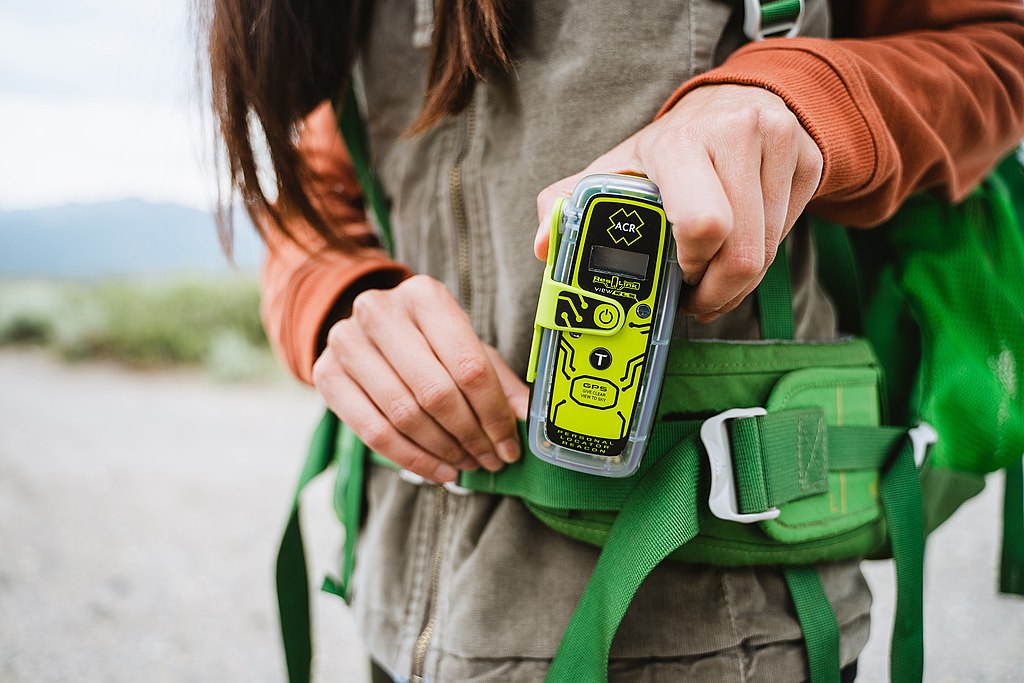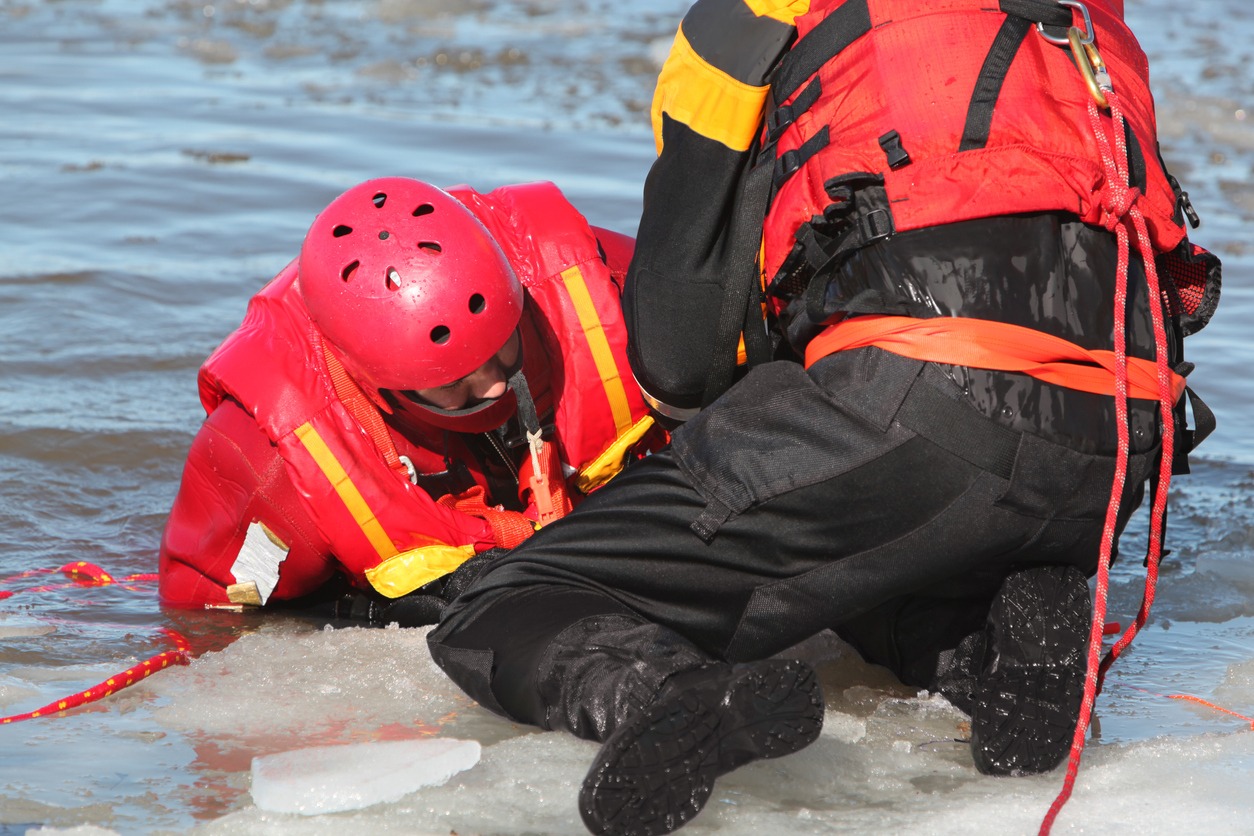If you are looking for a satellite communication emergency equipment, we have created this guide to help you understand the features and limitations of the Personal Locator Beacon.
A beacon, or personal locator beacon in that sense, is a satellite sync device that broadcasts the users’ whereabouts. It is a compact, battery-powered, portable personal safety equipment that requires no subscription beyond the first purchase, so there are no ongoing costs.
How Does It Works?
Personal Locator Beacons (PLBs) use frequencies ranging from 406 MHz to 406.10 MHz. When turned on, 406 MHz beacons send a short distress signal for a fraction of a second, and then once every 50 seconds after that.
The signal is picked up by the COSPAS SARSAT satellites.
The national authority in charge of the beacon is identified by COSPAS SARSAT’s central authority.
The signal from the satellites is received by local user terminals (LUTs), which are the closest receiving stations on Earth. After processing the data and determining the location of the distress beacon, the LUT transmits a decoded alert message to the national mission control center that is assigned to it.
When a signal is detected and confirmed to be a distress call coming from a specific location, the Rescue Coordination Centre (RCC) in that area is notified and, if the distress is believed to be genuine, activates rescue assets to locate the parties in danger.
Why Would Someone Use a Personal Locator Beacon?
People should use caution when venturing far into the wilderness, away from civilization. Although being in nature inspires a sense of adventure and excitement, adventurers should always be prepared and on guard because the great outdoor is incredibly dangerous. This makes PLBs essential for anyone engaged in outdoor activities like trekking, hunting, camping, boating, mountain climbing, sailing, gliding, or road trips when away from cellular and internet services. This system’s primary objective is to assist rescue personnel in locating survivors. Even if everyone may hope to never need one, a PLB should be a crucial part of any outdoor person’s emergency kit.
What Are the Advantages of Personal Locator Beacon?
- PLBs are the best option if you want an affordable satellite communicator. Among satellite communicators, it is the cheapest. It has no monthly or annual service fee.
- It is portable, lightweight, and simple to carry. It can be secured to your jacket or outerwear for convenient use in an emergency.
- Even with just one hand or when wearing gloves, it is simple to use.
- When PLBs broadcast emergency signals, they are detected by COSPAS SARSAT, which provides global coverage.
- Personal Locator Beacons (PLBs) require a permit under regulation and using a PLB device does not require a personal license.
- If there is no impediment, PLBs have a stronger signal than satellite phones.
What Are the Downside of Using Personal Locator Beacon?
Although PLBs have several benefits, their functionality is limited.
- Beacon technology is intended for outdoor use and requires a clear view of the sky. It should be positioned in a spot that is free from obstructions like trees, cliff walls, and other moving objects, with the aerial vertical and directed upward. Preferably, there should be 180 degrees or more of visibility.
- No message writing or viewing on the device. PLBs can’t place or answer phone calls, send texts, or make text-based communication. It is a one-way communication.
- A PLB doesn’t give any details regarding the emergency’s nature to the teams that will be doing the rescue.
- PLBs do not have the ability to confirm whether or not an emergency message has been received.
- There are some models without GPS.
- Most PLBs are only waterproof to a few meters on their own, and some models are not buoyant.
- Batteries are non-rechargeable, and after five years of inactivity, replacement of the batteries would be pricey.
- It must be used properly; excuses for minor crises or plan adjustments are not allowed.
- PLBs lack Wi-Fi functionality. You can’t use it to access the internet.
How Do You Select the Best PLB for You?
Battery Life
PLB batteries are powered by non-rechargeable lithium batteries and have a limited lifespan of 5 to 10 years, depending on the model.
Size
Nearly all PLB are compact, and lightweight. The smallest, on the other hand, is 2.95 inches long and weighs as little as 4.6 ounces. The more compact the size, the more convenient it is.
GPS Tracking Capability
If the PLB incorporates GPS tracking, rescue agencies could find your present location coordinates. It transmits a location that is more accurate than PLB without GPS.
Strobe System
LED and infrared strobe light are features of some models. Compared to a conventional flash, the light produced is brighter and stronger.
Transmission Time
PLB must resist the below-freezing temperatures while transmitting distress calls for at least 24 hours.
Accuracy
The PLB is significantly more dependable than commercial satellite-based systems, internet service, or cellphone service due to its reliance on and precision of this system, which allows it to operate anywhere in the world, on land or in the sea.
Price
The typical cost of a PLB is between $200 and $600 USD.
Plus, an extra charge for recurring battery replacement. But it doesn’t require a subscription every month.
Conclusion
A personal identify is included in each distress signal transmitted by PLB. For the rescuers to correctly identify PLBs, they must be registered with the local authorities. Free online registration is available.
Only extreme and impending threat should cause PLBs to be activated. Misuse could result in the pointless use of expensive Search and Rescue resources, putting the lives of others in danger, especially the lives of the rescuers.

